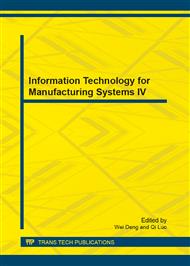p.706
p.711
p.717
p.721
p.725
p.731
p.737
p.747
p.751
Research on the Creation of Small-Scale English-Chinese Parallel Corpus for Manufacturing Systems
Abstract:
English, which is specially used in the field of manufacturing systems, belongs to ESP (English for specific purposes). In order to improve the effect of ESP education in China, it is very necessary to create an English-Chinese parallel corpus for aiding ESP teaching and learning. In this paper, a novel method is presented to create a small-scale English-Chinese parallel corpus by means of TMS (translation memory system). Firstly, the suitable English and Chinese texts are collected from network, publication and human translation; secondly, The English and Chinese texts are aligned and formatted by using the related TMS functions; then Chinese texts are split into words by using ICWSS (Intelligent Chinese Word Segmentation System); finally, the English-Chinese corpus is stored in cloud database. This small-scale English-Chinese parallel corpus can be searched through ParaConc and meet the basic needs of ESP teaching and learning. Since the method does not need to design new algorithm nor develop new software system, the construction of the corpus is much easier and more flexible compared to general large-scale corpus.
Info:
Periodical:
Pages:
725-730
Citation:
Online since:
September 2013
Authors:
Price:
Сopyright:
© 2013 Trans Tech Publications Ltd. All Rights Reserved
Share:
Citation:


